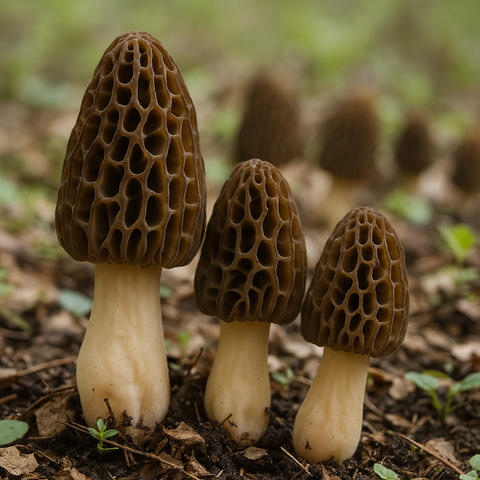Among the many wild delicacies that nature provides, few inspire as much excitement among chefs, foragers, and food lovers as the morel mushroom. Known for their distinctive honeycomb appearance and rich, earthy flavor, morels are considered one of the most prized fungi in the culinary world. Each spring, a devoted community of mushroom hunters scours forests and fields in search of these elusive gems, adding to their reputation as both a gourmet ingredient and a seasonal adventure.
What Makes Morels So Special?
Unlike many common mushrooms you might find in the grocery store, morels stand out both visually and gastronomically. Their hollow, spongy caps are covered in deep ridges and pits, resembling a honeycomb or sponge. This unique structure not only makes them easily recognizable but also allows them to absorb sauces, butter, and seasonings beautifully.
The flavor of a morel mushroom is often described as earthy, nutty, and slightly smoky, with a meaty texture that makes it stand out in any dish. For chefs, morels represent a flavor profile that’s complex yet versatile—pairing just as well with simple butter and garlic as with luxurious ingredients like cream, wine, or truffles.
The Thrill of the Hunt
Part of the mystique of morels comes from how difficult they are to cultivate. Unlike button or shiitake mushrooms, which can be grown commercially in controlled environments, morels resist large-scale farming. While there have been limited successes in cultivation, most morels are still gathered by hand in the wild.

This scarcity makes them highly sought after each spring when they emerge from the soil, often just after the first warm rains of the season. Their exact growing conditions are notoriously finicky—they thrive in areas where the ground has warmed to about 50 degrees Fahrenheit, often near certain types of trees such as ash, elm, and apple. Some hunters even swear by finding them in places where there’s been a recent forest fire, as morels seem to thrive in disturbed soil.
The hunt itself is a tradition. Families, friends, and seasoned foragers head out into the woods with baskets and bags, hoping to return with a haul. But even for the experienced, finding morels can feel like a treasure hunt. Their mottled brown caps blend perfectly into the forest floor, hiding among leaves and twigs until a sharp eye catches them.
Culinary Uses
Once found, morels are treated with reverence in the kitchen. Because they are hollow inside, they cook quickly, and their flavor intensifies with even the simplest preparation. The classic approach is to sauté them in butter with a touch of salt, allowing their natural character to shine through.

More adventurous dishes might include morel risotto, morels stuffed with cheese and herbs, or morels simmered in cream-based sauces to serve over meat or pasta. In French cuisine, morels often appear alongside veal, poultry, or seafood, where their earthy richness provides the perfect counterpoint to lighter proteins.
Another essential detail: morels should always be cooked before eating. Unlike some mushrooms, raw morels can cause digestive issues. A quick sauté or simmer not only enhances their flavor but ensures they are safe to enjoy.
A Gourmet Investment
Because of their scarcity, morels command a high price in markets and restaurants. Fresh morels can cost anywhere from $20 to $50 per pound, depending on the season and availability. Dried morels are another option, offering a concentrated flavor and longer shelf life, though they often come at a premium as well.
For many food enthusiasts, the cost is worth it. Morels deliver an experience that’s about more than taste—it’s about savoring a fleeting moment of spring. Just as asparagus or ramps mark the changing of the seasons, morels are a reminder that some of the best things in life are seasonal and temporary.
A Symbol of Connection
Beyond their culinary value, morels have a cultural significance as well. For many, the act of hunting morels is about more than food—it’s about connecting with nature, slowing down, and experiencing the thrill of discovery. The tradition is passed down through families and communities, creating memories and stories that last long after the mushrooms have been eaten.
In a fast-paced world where so much food is available year-round, morels stand as a reminder of the rhythms of nature. They can’t be rushed, forced, or faked. Their arrival each spring is a gift for those willing to look.
Conclusion
Morel mushrooms are more than just a gourmet delicacy—they are a symbol of nature’s mystery, a seasonal treasure that brings people together, and a culinary delight that inspires creativity in the kitchen. Whether you are a seasoned chef, a first-time forager, or someone who simply loves unique ingredients, morels offer an experience unlike any other.
So the next time spring rolls around, keep an eye on the forest floor—you may just stumble upon one of the most coveted ingredients in the culinary world.
Shop Morel Mushrooms!




